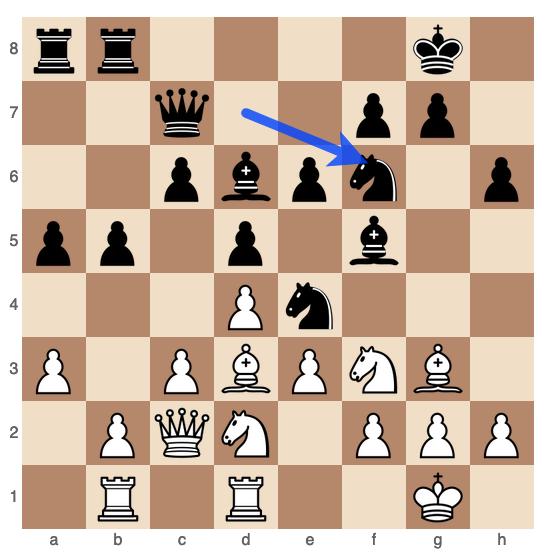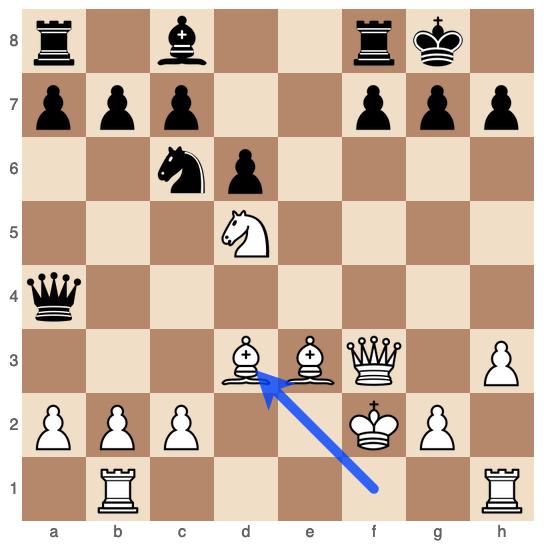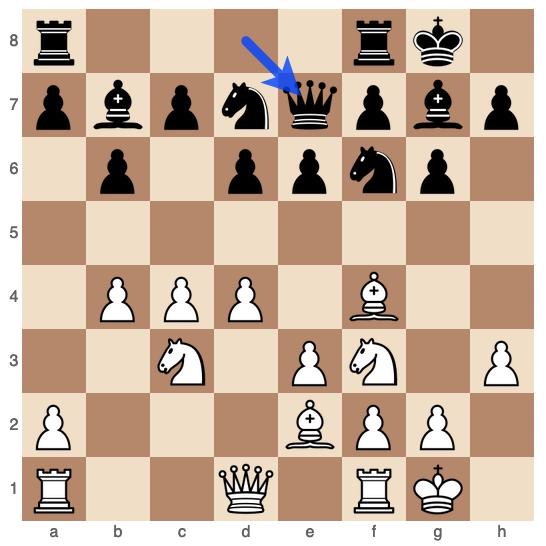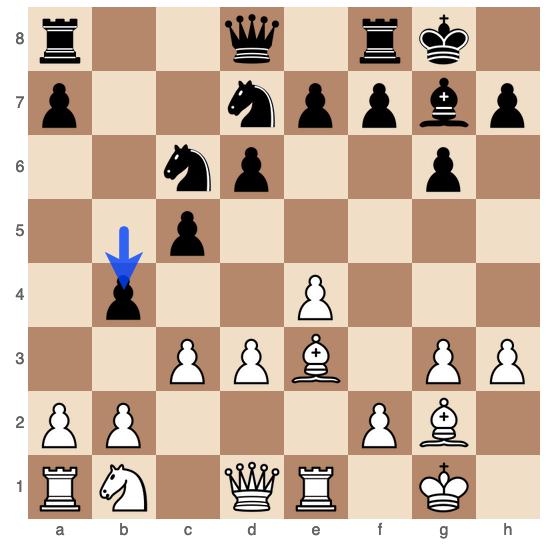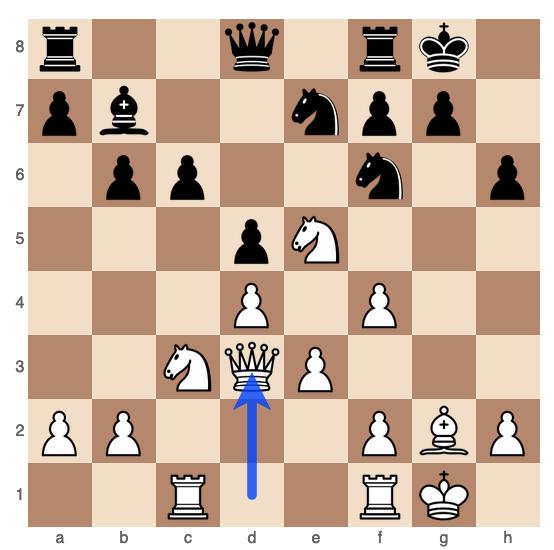In this Titled Tuesday matchup, Guillermo Baches faces off against Mat Bach in a dynamic encounter arising from the Benoni Defense. Baches, with the white pieces, navigates through a sharp middlegame, eventually seizing control of the position and converting it into a well-deserved victory. The game showcases Baches’ ability to handle complex positions, utilizing tactical opportunities and strategic play to outmaneuver his opponent.
The Opening
The game begins with the Benoni Defense (1. d4 Nf6 2. c4 c5 3. d5 e6), a sharp and aggressive choice by Black. This opening leads to asymmetrical pawn structures and typically provides chances for both sides. After 4. Nc3 exd5 5. cxd5, Baches establishes a strong pawn center, while Black prepares to fianchetto the kingside bishop with 6…g6.
Baches follows with the classical 7. h3, a subtle move aiming to prevent Black’s bishop from pinning the knight on f3. By move 9, Baches has completed his development with 9. Bd3 and 10. Nxb5, choosing to accept the challenge on the queenside. This leads to a position where Black’s pieces are actively placed, but White retains a solid pawn center and better control over the key squares.
The Middlegame
The middlegame begins after Baches castles and Black replies with 11…Nxe4. Baches quickly seizes the initiative with 12. Bxe4, forcing Black’s knight to retreat and creating imbalances in the position. After 14. Nc3, Baches develops his knight with tempo, attacking the queen and preparing to centralize his rooks.
The turning point in the middlegame comes after 16. Rfe1, where Baches lines up his rook on the e-file, exerting pressure on Black’s pawn on e7. Black tries to exchange queens with 19…Qb4, but Baches cleverly avoids this, instead maneuvering his pieces to more active squares and forcing Black to weaken his pawn structure with 21…cxb4. This move allows Baches to establish a dominant knight on f6, supported by his bishops, creating a decisive attack.
The Endgame
As the game transitions to the endgame, Baches is clearly in control. With 25. Bxd6, he removes Black’s powerful light-squared bishop, further simplifying the position into a favorable endgame. The critical moment comes after 29. bxa4 Rxa4 30. a3, where Baches solidifies his pawn structure and prepares to activate his rooks.
Baches’ superior endgame technique is evident as he gradually improves his pieces, particularly his rooks, while limiting Black’s counterplay. By move 37, Baches has pushed Black into a passive position, and with 38. Kf3, he centralizes his king, further strengthening his control over the board. The final sequence, starting with 42. Rg7+, leads to a forced win as Baches’ rooks dominate the seventh rank, leaving Black no options but to resign.
Conclusion
This game is a superb demonstration of how to handle the Benoni Defense as White, transitioning smoothly from a sharp opening to a strategically won endgame. Baches’ play was marked by a keen sense of timing, piece activity, and endgame precision.
Key Lessons:
- In the Benoni Defense, White should aim to maintain a strong pawn center and leverage it to restrict Black’s piece activity.
- Active piece play and controlling key squares can transform a sharp middlegame into a winning endgame.
- In the endgame, centralizing the king and activating rooks are essential strategies for converting an advantage into a victory.
“Chess is not just about the opening or the middlegame; it’s about harmonizing every phase of the game.” Baches exemplified this principle, turning a complex battle into a clear and instructive win.

